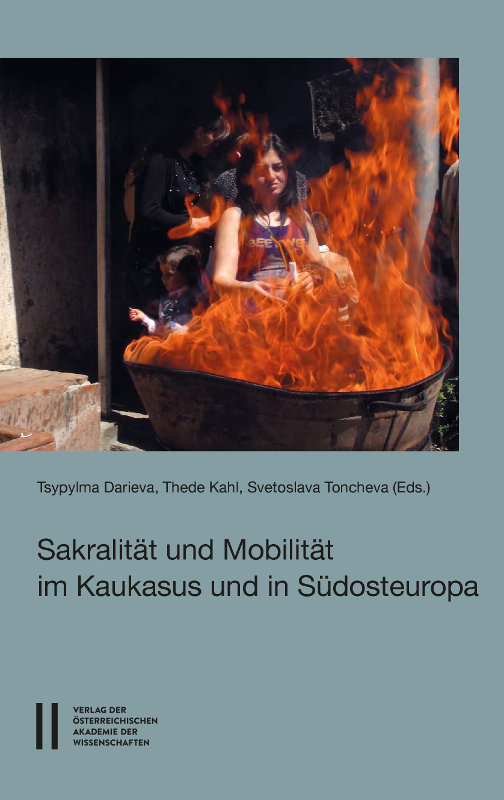Tsypylma DARIEVA
teaches at Humboldt University of Berlin
Thede Kahl
is professor for South Slawic Studies at the Friedrich Schiller University Jena
Svetoslava TONCHEVA
is a senior assistant professor at the Institute of Ethnology and Folklore Studies of the Bulgarian Academy of Sciences
|
 |
ISBN 978-3-7001-8099-9 Print Edition
ISBN 978-3-7001-8252-8 Online Edition
Unterschiedliche Konzepte und Praktiken von Sakralität in einem transregionalen Vergleich am Beispiel von Kaukasus und Südosteuropa sind Hauptthemen des vorliegenden Bandes. Beide Regionen zeichnen sich durch eine hochgradige ethnokonfessionelle Pluralität aus, die in der postsozialistischen Phase durch eine Re-Sakralisierung gekennzeichnet ist. Sakralisierung wird dabei von den Autoren als ein Zuschreibungs- und Inszenierungsprozess im Kontext der Mobilität verstanden, in dem heilige Orte und spirituelle Praktiken in pluriethnischen Gesellschaften moderne Kategorien und dynamische Begegnungsräume darstellen. Heidnische oder postmoderne Wallfahrten, christliches und islamisches Pilgerwesen, Transfer heiliger Reliquien, mobile und urbane Heiligenkulte und Sakralisierung von Landschaften durch Reisen bilden nach Forschungsergebnissen der Autoren wesentliche Ressourcen für die Konstruktion lokaler und regionaler Identitäten in Südosteuropa und im Kaukasus.
Ohne Anspruch auf Vollständigkeit zu erheben, bieten diskursorientierte und ethnographische Beiträge Einblicke in die Phänomene der Sakralisierungsprozesse und zeigen, welchen Stellenwert eine sakral motivierte Mobilität innerhalb der postsozialistischen Gesellschaften Südosteuropas und des Kaukasus einnehmen kann und welche Akteure „groß-“ und „kleinformatige“ sakrale Räume in den „Durchgangszonen“ beeinflussen und mobilisieren. Trotz politischer Umbrüche scheinen „kleinformatige“ sakrale Räume eine gewisse Kontinuität zu erhalten.
Das vorliegende Buch ist aus einer Ringvorlesung an der Friedrich-Schiller-Universität Jena (2014–2015) hervorgegangen und wurde durch Ergebnisse eines von der Volkswagen-Stiftung geförderten Forschungsprojekts (2013–2016) über die Transformation sakraler Räume im Kaukasus ergänzt.
…
|
